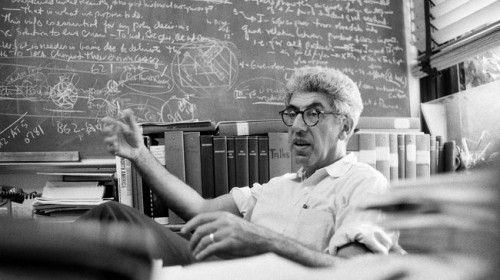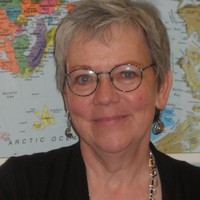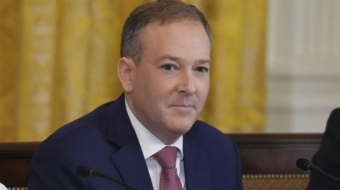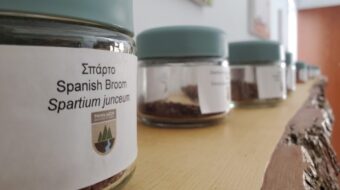
The environmental movement lost one of its most passionate voices when Barry Commoner, ecologist and political activist, died on Sept. 30 at age 95. Known for his key roles in the 1963 Nuclear Test Ban Treaty and the 1970 Clean Air Act, Commoner served as founder and director of the Center for the Biology of Natural Systems for much of his professional life. His seminal book The Closing Circle: Nature, Man and Technology (1971), is widely recognized as one of the key works of the environmental movement.
Commoner saw science as a weapon in the fight against industrial abuse of the environment. As he told a New York Times reporter in 1976, major political questions have both scientific and economic components. In The Closing Circle, he argued that capitalist production leads to extravagant use of resources and energy, and is inherently thoughtless when it adopts anti-social and environmentally short-sighted methods of production. These in turn have negative consequences throughout the social fabric. “Everything is connected to everything else” was one of the basic laws of ecology promulgated in The Closing Circle.
Commoner was an ecologist who learned to love nature in Prospect Park in Brooklyn, N.Y., where he grew up. He studied zoology as an undergraduate at Columbia University and received a doctorate from Harvard in 1941. He relocated to St. Louis to teach at Washington University, where he taught until he moved to Queens College in 1981.
Commoner first combined science with activism in the 1950s, when scientists were growing increasingly concerned about the effects of radioactive fallout from nuclear weapons testing.
At the time, the Atomic Energy Commission claimed that any danger was strictly limited to the immediate test-site. Commoner and his colleagues devised an ingenious way of challenging the AEC’s claims. They appealed to local children in St. Louis to donate their baby-teeth to science. The teeth were then tested for strontium-90, a byproduct of nuclear weapons testing. Commoner’s research demonstrated conclusively that even children far from testing sites had enough strontium-90 in their bones to put them at risk for developing cancer later in their lives.
Simultaneously, Commoner spoke at St. Louis churches and lecture halls about the dangers of radioactive fallout from nuclear tests, and he established the St. Louis Committee for Nuclear Information (CNI). The CNI circulated a petition calling for an international agreement to stop testing nuclear weapons, and over 11,000 scientists signed on.
It was a compelling combination of sound science and community empowerment. Commoner’s work served as the scientific foundation of the Nuclear Test Ban Treaty that was signed in 1963.
That early victory set the stage for Commoner’s combination of science and activism throughout the 1960s and later. He saw himself as informing the public, enabling people to take a more active and informed role in decisions to protect the environment. In 1963 he founded, along with anthropologist Margaret Mead, the Scientists’ Institute for Public Information, which served as a conduit of communication between scientists and the public well into the 1980s.
Commoner’s Center for the Biology of Natural Systems defined “natural systems” broadly and investigated problems like lead poisoning in impoverished neighborhoods, pollution caused by fertilizer run-off, and the economics of organic and conventional farming. At the same time, Commoner was a tireless speaker, bringing scientific information to union halls, community churches and college auditoriums.
The year 1970 brought Commoner to the height of influence. That April saw the first Earth Day, and Commoner spoke to countless audiences as the modern environmental movement came together. A Time magazine cover story dubbed him “the Paul Revere of Ecology” for his early leadership in the field. His persuasion was felt in the passage of the Clean Air Act in 1970 and in the establishment of the Environmental Protection Agency the same year.
In 1979, Commoner helped to found the Citizens’ Party in an attempt to bring together community activists, disaffected trade unions, consumer groups and anti-nuclear energy advocates into one progressive coalition. Commoner was the Citizens’ Party candidate for president in 1980, running on a platform that called for greater citizen control over corporate decision-making, reductions in military spending and discontinuance of nuclear energy development. Though Commoner won less than a percentage point of the popular vote, the campaigners felt that their message was heard. When asked about his campaign by the New York Times in 2007, he said that the best question of the campaign was from a local reporter who asked, “Dr. Commoner, are you a serious candidate or are you just running on the issues?”
Asked what legacy he hoped to leave, Commoner said simply that he had devoted his life to learning things about science that are useful to people where they live. His practice of bringing science to the service of the people serve as a model for activist-scientists for generations to come.
Photo: Via ohiocitizen.org










